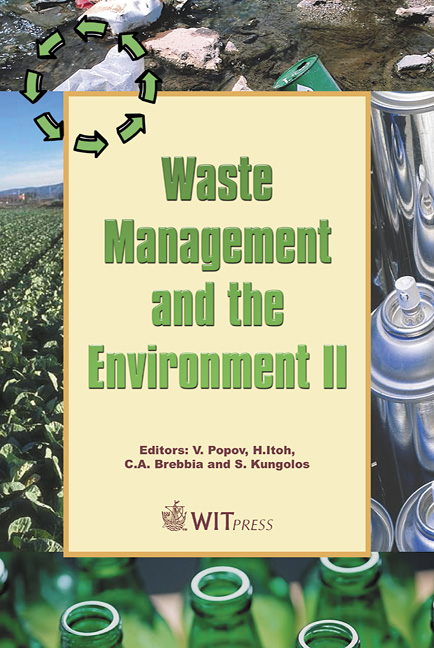Treatment Of Solid Waste Polluted By Polychlorinated Contaminants (pilot-scale Demonstration)
Price
Free (open access)
Transaction
Volume
78
Pages
11
Published
2004
Size
948 kb
Paper DOI
10.2495/WM040021
Copyright
WIT Press
Author(s)
M. Kubal, J. Fairweather, P. Crain& M. Kuraš
Abstract
This work describes a pilot-scale demonstration of thermal desorption treatment and base catalyzed decomposition of solid waste containing polychlorinated contaminants (e.g. dioxins). The two technological processes were chosen to treat the solid waste from a heavily polluted site in the Spolana Neratovice (Czech Republic) chemical plant. Contaminated waste, such as soil, building waste and steel parts, was first processed by thermal desorption, where the polychlorinated pollutants were desorbed from the solid matrix in the electrically heated chamber purged with nitrogen and accumulated at the outlet from the desorption unit in the form of a condensate. The condensate thus formed was transferred to the BCD reactor, where it was mixed with mineral oil, sodium hydroxide and a catalyst and processed at a temperature of about 350 o C. The chlorinated chemicals found at the site in their original containers and bags were processed directly in the BCD reactor. Approximately 1 m 3 of polluted building waste, soil, chemicals and steel parts were treated during the pilot-scale demonstration. Both the thermal desorption process and the BCD reactor showed very high efficiencies in removing and dechlorination of contaminating compounds even in the case of extremely high concentrations. In most cases the concentration of dioxins in decontaminated materials was lower than 200 ng/kg (TEQ less than 100 ng/kg). Keywords: solid waste, polychlorinated contaminants, dioxins, thermal desorption, base catalyzed decomposition, BCD.
Keywords
solid waste, polychlorinated contaminants, dioxins, thermal desorption, base catalyzed decomposition, BCD.





